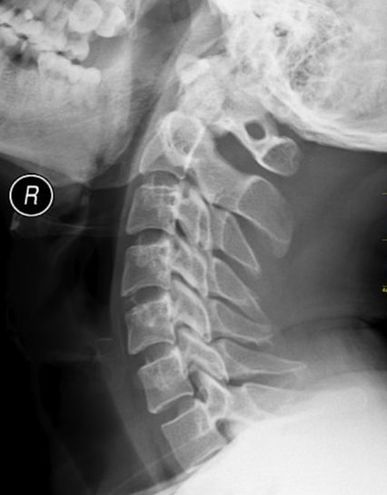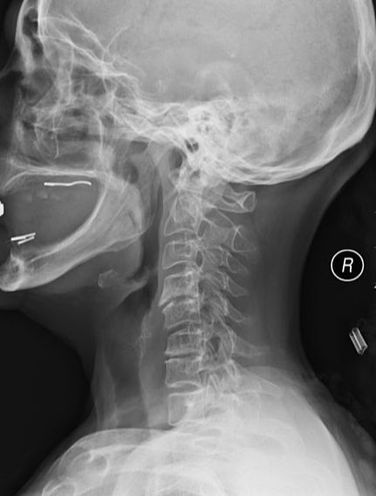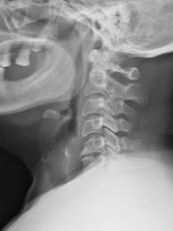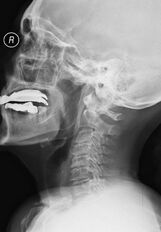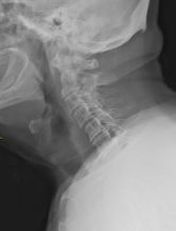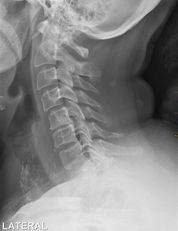DEGENERATIVE ARTHRITIS & ITS RELATIONSHIP TO LOSS OF PROPRIOCEPTION
Osteoarthritis Maybe your NECK HAS BECOME TERRIBLY STIFF? Maybe your neck has not moved like it should for years — or even decades? Maybe your neck even sounds like it’s full of GROUND GLASS OR CRUSHED GRAVEL when you move it (the medical word for this is “creep” and is where the word “decrepit” comes from)? Although you have no idea yet what I am talking about, your joint degeneration has likely been caused by a combination of two things — POOR NUTRITION coupled with a loss of proprioception. Although your doctors will undoubtedly tell you otherwise, this problem may be far more manageable than you have ever been led to believe —- even if it is DECADES OLD!
Proprioception
The word “proprioception” comes from two words. First is the Latin word “proprius”, meaning “one’s own”. And second is the word “perception”, meaning the process by which one translates sensory input into a coherent and unified picture of one’s environment.
Thus, proprioception is the sense or “perception” of the relative position of various parts of the body in relationship to its environment. It is knowing where those various body parts are in space as well as how they are moving in relationship to each other. It is this internal sense of proprioception that tells you whether your body (or a part of your body — i.e. a limb) are moving, how fast they may be moving, and how much energy is being expended to move a specific body part. Proprioception also tells us where various parts of the body are located in space —– in relation to every other part of the body. As you start to grasp how big this thing called proprioception is, you can begin to understand why it has been said that it is actually more important than the inner ear for balance!
Think of proprioception like this. What happens if I put you in a room with no windows, doors, or lights? Even though it is as dark as a cave, and you can not see your hand in front of your face —– you know that your hand is in front of your face. You would also be able to tell when your hand moved, how much it moved, or how fast it moved, and whether or not there was any resistance when you moved it. You can tell how many fingers you hold up, or even touch your finger to your nose repeatedly. You should also be able to tell when you squat down. Or when your pace of walking is accelerated. Or when any number of bodily functions are occurring. If I gave you an object to lift, proprioception would tell you that you either need to lift with all your might, or that you barely need to expend any energy as the object is very small and light.
Although it is certainly helpful, you do not have to have visual input to perceive these sorts of things, as long as proprioception is functioning properly (think about blind people here). This is because specialized nerve cells called proprioceptors (aka mechano-receptors) are found in large numbers, in the tissues that hold joints together (tendons, muscles, ligaments, and PARTICULARLY FASCIA). Proprioceptors sense things like the amount of stretch, movement, and pressure on these various tissues.
When proprioceptors are stimulated by stretch or movement, the nerve input is fed to the brain via the spinal cord and nerve system. In the brain (cerebellum), it is integrated into something your body can understand. There is a continual feedback loop. Proprioceptors are being stimulated and firing off to the brain. Your brain interprets the information from the proprioceptors and sends messages back to the various parts of the body along the motor nerve pathways. When it all works well, things are grand. However, when this system begins to break down, all sorts of problems can arise —– many of them ugly and severe.
For instance, recent scientific research has shown us that in healthy people, for every proprioceptive impulse (sensory – afferent) that is fired up to the brain; there are 30 return nerve impulses (motor – efferent) coming back down. Motor responses tell your body what to do and how to function. It is motor function of the nerve system that tells your heart to beat, your bowels to work, your hand to move in front of your face, or your immune system to attack — or not attack, depending on the threat. Every time a proprioceptive nerve ending is not being stimulated like it should be (usually due to restricted range of motion of a particular joint), 30 returning motor responses from the brain to the body are being inhibited. This does two big things.
- Firstly, it causes degeneration of the restricted joint. Everyone has heard the old adage “Use it or lose it”. Although it is a simple cliché, there is a tremendous amount of truth in those five words. A quick review of the scientific literature on the subject tells us that loss of normal joint motion (loss of proprioception) causes degeneration of the affected joint. Furthermore, it tells us that degeneration of the joint causes loss of normal joint motion (loss of proprioception). Ladies and Gentlemen; start your cycles! In a viscous cycle, A causes B, and B causes A. The whole thing spins around and around and around in an increasingly faster circle, all the while being fed by itself! This is why covering / masking pain and other symptoms without as much as attempting to deal with underlying functional deficits (decreased ranges of motion in vertebrates or other joints), is a recipe for degeneration and decay. This joint degeneration used to be called Degenerative Arthritis or Osteoarthritis. While the medical profession is great a providing drugs to mask these symptoms, they are terrible at dealing with the cause of those symptoms.
- Secondly, using this model, think about what loss of joint motion, and the subsequent loss of proprioceptive input can do to the various body organs and organ systems? Because the brain ultimately controls every function of the body via the spinal cord and nerve system, a loss of range of motion and proprioception can actually diminish organic function. Sound crazy? Let me explain.
Loss of spinal range of motion due either to VERTEBRAL SUBLUXATION (loss of normal alignment or motion of vertebrates) or FASCIAL ADHESION (frequently these are found together), causes diminished proprioceptive function. This loss of proprioception turns around and causes a loss of motor nerve function at the 30:1 ratio that we spoke of a few paragraphs back. In other words, loss of spinal range of motion causes a corresponding loss of proprioception, which in turn affects not only the way that muscles and joints function, but the way that organs function as well.
For every proprioceptive nerve ending that is inhibited from firing up to the brain because of lost spinal motion, there are 30 motor nerve responses that are inhibited from coming back down from the brain to the various organs and tissues of the body. It quickly becomes obvious that in a very brief amount of time, loss of normal spinal function can (often times very subtly at first) cause diminished function of various body organs and ORGAN SYSTEMS, including the IMMUNE SYSTEM.
Bear in mind that in most cases, loss of joint motion is, sooner or later, going to result in pain. The beauty of gentle Chiropractic Adjustments and Scar Tissue Remodeling, is that it not only helps relieve pain while it is restoring range of motion, it actually allows the nerve system and the various functions controlled by the nerve system (everything!) to function closer to the way they were designed and created to function from the beginning! (Read REX’S TESTIMONIAL of a neck adjustment fixing 42 years of deafness — or JOY REEVES’ headaches leaving, and her sense of smell coming back after a 30 year hiatus due to our SCAR TISSUE REMODELING).
DJD / DEGENERATIVE JOINT DISEASE
Above are two radiographs (x-rays) of two different necks —- the one on the left has a decent lordotic curve as well as well-preserved disc spacing. The one on the right has several areas of ugly degeneration, bone spurs, thinning space, vertebral deformation, and a complete loss of lordotic curve. Below are a number of examples of DJD (Degenerative Osteoarthritis) of the Cervical Spine or neck. See if you can spot the areas that are degenerative. Remember that degeneration of the cervical spine occurs most commonly at the C5-C6 level. You are looking for loss of normal lordotic curve, bone spurs, calcium deposits, vertebral deformation, and thinning discs. Be aware that I could easily have done the same thing with the lumbar spine (low back) instead of the cervical spine. Thank you Dr. Nevit Dilmen for the images!
Although doctors are very much aware of the information that I am about to present, they do a poor job (often times, no job) of communicating it to patients. Lack of communication / education creates patients who are especially susceptible to the power of suggestion — and marketing. Marketing is where large corporations (in this case, think Cox or St. Johns) get you to suspend logic and intelligence so they can sell you some ocean front property in Arizona. One of the biggest snow jobs in the medical profession today concerns THE INVENTION OF THE TERM DJD (otherwise known as OSTEO ARTHRITIS).
Doctor’s know that loss of joint motion causes deterioration of the affected joint (look at how they use CPM’s in post-surgical knee rehabilitation). This is not some new discovery. It has been in the scientific literature for decades. But in the past, this degenerative change was referred to as Osteoarthritis or Degenerative Arthritis. Although we have seen how degeneration occurs, it has been, for the most part, blamed on a person’s age. This is true whether the patient was 35 or 95. However, when looking at today’s radiology reports, it becomes all too apparent that Osteoarthritis is a thing of the past. Clear the streets folks, because there’s a new kid in town; and his initials are D.J.D.
DJD stands for Degenerative Joint Disease, and it is one of the single most brilliant marketing ploys ever devised by the medical community. Never tell a patient that they have Osteoarthritis that is due to abnormal joint function (improper joint mechanics) over time. In fact, don’t even bother to blame it on their age (even though, as we just showed you, that this is not really accurate either). Tell them they have a “Disease”! Convince people that “aw shucks, doc told me that I have a disease in my (insert body part of choice here) and there’s not a durned thing that can really be done about it other than taking more drugs.” And eventually, as the cycle spins faster and faster and faster, and it all falls totally apart — your doctor will tell you that you need surgery. Like I said, brilliant marketing. Nothing sells more medical care than that wonderful combination of misinformation, half-truths, greed, and fear!
HEY DOC, WHAT IF I REALLY AM OLD?
When I look at an X-ray in my office and see calcium deposits, bone spurs, and thinning joint space / disc space, systemically (everywhere); I have a pretty good idea that we are looking at degeneration that is due, at least largely, to a persons age (it can also be caused by years of processed food; See Dr. Weston Price’s Nutrition and Physical Degeneration). However, when I look at an X-ray and see a rather nice-looking spine that has one or two localized areas of degeneration surrounded by healthy discs and vertebrae; I know immediately that this is mechanical in nature —- most likely due to some sort of old and uncorrected injury.
The injury might have been caused all at once by some big trauma (MVA are one of the most common); or it may have built up slowly over time due to the repetitive, mechanical stress of a physically-demanding job (or sport). Bottom line: if the spine is not moving vertebrate, by vertebrate, by vertebrate, it is wearing; and if it is wearing, it is not moving like it should be. Repeat cycle. Repeat cycle. Repeat cycle. Faster, faster, faster. Round and round she goes.If you have loss of normal joint motion, whether you have pain or not, you need to find out why. The standard medical answer of, “Golly Joe, after all, you’re just not as young as you were last year,” is no longer sufficient — as if it ever really was!
Bear in mind that our “Tissue Remodeling” treatment is not a cure for degenerative arthritis —- and will not make your x-ray look one iota better. However, in the same way that you can free an old corroded nut from a rusty bolt by putting your wrench on, working it back and forth, and simply making it move; we make large areas of the body move better via freeing the microscopic scarring that “locks” specific areas and prevents them from moving like they were designed to move. We then restore movement to individual joints via adjustments, stretches, and exercises. It is not uncommon to take patients who have been given up on by the medical community (or even the chiropractic community) — people who literally could not move their head more than a few degrees in any direction; and restore movement to the point they can back their car without the use of mirrors (WATCH THIS). Or swim, golf, and throw a ball. Many of the people I treat have spent each and every waking moment of their lives trying to get away from unrelenting Chronic Pain. My goal is simply to give them their lives back. Would having your life back feel like someone set a brick of solid gold in your lap? Sure it would! Especially if you have spent very much time and money on the MEDICAL MERRY-GO-ROUND.

